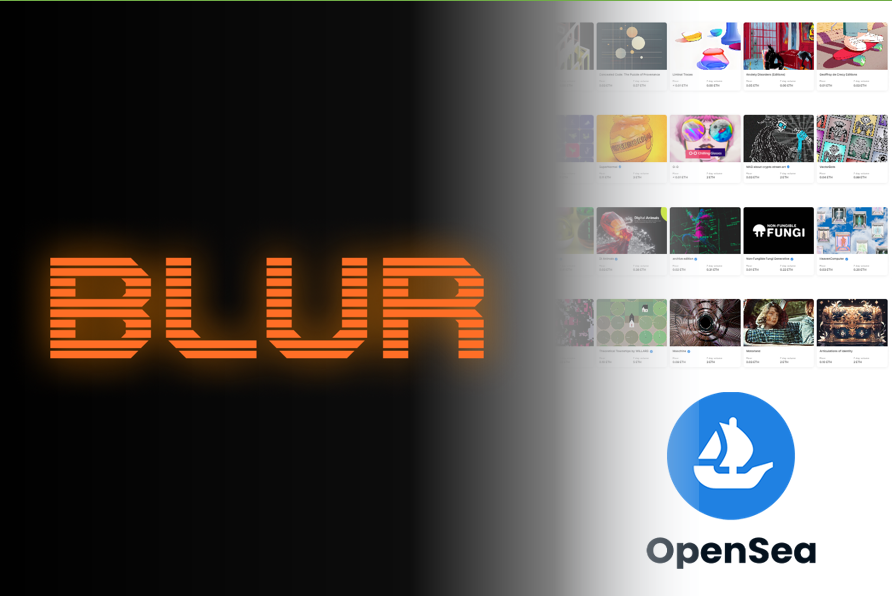
A race to the bottom between NFT marketplaces has hit creators hardest of all, as NFT royalties fell to a two-year low last month.
A report released on Wednesday by crypto analytics firm Nansen shows that in their biggest earning week in June, NFT artists collected just 2,000 ETH in royalties ($3.8 million), a sharp decline from the 28,000 ETH ($76 million) earned in their best-performing week from last year.
The downturn has been ongoing since last summer when several marketplaces started making artist royalties on NFT purchases optional, and only intensified after newcomer Blur entered the market.
The promise of a fairer art market
When the buzz about NFTs and Web3 first started, artists were among the first to get in on the act, hoping that it might mark the end of an age-old fight for recognition and compensation. Immutable, distributed, and transparent, blockchain technology promised to disrupt the art world to the benefit of creators.
Key to this was the implementation of smart contracts, which can ensure that artists are paid a royalty fee whenever someone resells their NFT art, therefore making sure that the artist also benefits if one of their pieces goes up in value.
Blockchain has always followed an ethos of decentralization and fairness. Loyal to these core principles, the first NFT marketplaces applied 5% to 10% creator’s fees to every sale, without the need to rely on smart contracts to enforce such payments.
This noble behavior lasted until the initial unsustainable NFT hype began to dwindle, taking sales, value and principles with it.
The introduction of optional royalties
In August last year, Ethereum-based X2Y2 introduced ‘Flexible Royalties’, giving buyers the right to define whether and how much to pay creators when purchasing their art. LooksRare and Solana’s Magic Eden followed suit in October.
“It’s very sad, it’s also very tragic. We did not want to be in this position, but the market has already spoken in regards to optional market royalties,” - admitted Magic Eden representatives in their announcement.
A heated conversation started up on social media, with creators protesting against the move. Buyers immediately started taking advantage of the new policies to pay lower fees, but that didn’t prevent the volumes on these platforms from falling. According to data from Dune Analytics, the volume of sales on X2Y2 fell from 11,540 ETH to 547 ETH in the first three months after making royalties optional.
In protest against the marketplaces that had made royalties optional, creators moved to then-market leader OpenSea.
Co-founded by Devin Finzer and Alex Atallah, OpenSea went live in 2017 when few people knew exactly what digital collectibles were. As the first NFT marketplace, the platform set the standards for the industry, such as creators’ royalties. As other players bailed on creators, the $13.3 billion start-up remained loyal to its ethos.
Unfortunately, a new market entrant would soon force OpenSea's hand.
Blur, a new marketplace with over $14 million of backing from VC giant Paradigm, launched its beta version in October. Directed at pro-traders, Blur came with a disruptive value proposition including unseen features such as ‘floor sweeping’, ERC-20 governance token BLUR, zero platform fees, and optional royalties.
Artists - the first civilian casualties
A ruthless war had begun, marking the beginning of the end for the happy community days of NFTs and Web3.
One month after Blur’s release, OpenSea introduced a new set of code that blocked NFTs from being traded on platforms that didn’t honor creator royalty fees, which included X2Y2, Magic Eden, and Blur.
Blur was quick to respond by enforcing a minimum royalty fee of 0.5%. Magic Eden and X2Y2 reversed their previous stance, joining OpenSea in creators’ protection.
"Proud to stand with you—and the many brilliant creators in our community—on this critical measure. X2Y2 has been removed from our OperatorFilter and we hope other marketplaces will continue to join us. Onwards and upwards.” OpenSea wrote on Twitter
In January, however, Blur found a way to bypass the OpenSea blacklist. Two weeks later, it airdropped 360 million BLUR tokens. The tokens compensated potential users and drove intense volume to the platform.
The final blow came when Blur published a blog post recommending creators block OpenSea in order to earn full royalties. Open Sea was forced to retreat, announcing it would also be moving towards a 0.5% minimum royalty fee.
An uncertain future
By the time OpenSea changed its royalties policy, it was already too late to recover its dominant position.
According to the report released by Nansen, "OpenSea had been the dominant platform for distributing royalties to NFT projects until February 2023,” yet at the current time “OpenSea and Blur are on par with each other when it comes to the royalties paid through their respective marketplaces, with more royalties paid on Blur when the trading volume surges.”
At the start of June, Blur had 65% of the market share, while OpenSea’s share had fallen to 27%. OpenSea had lost not only its number one spot but also its moral position on creator royalties.
While on-chain enforced royalties are slowly regaining ground, buyers have expressed their preference for a no-royalties model, shattering the hopes of artists who believed Web3 could bring in a whole new era for fair artist compensation.

